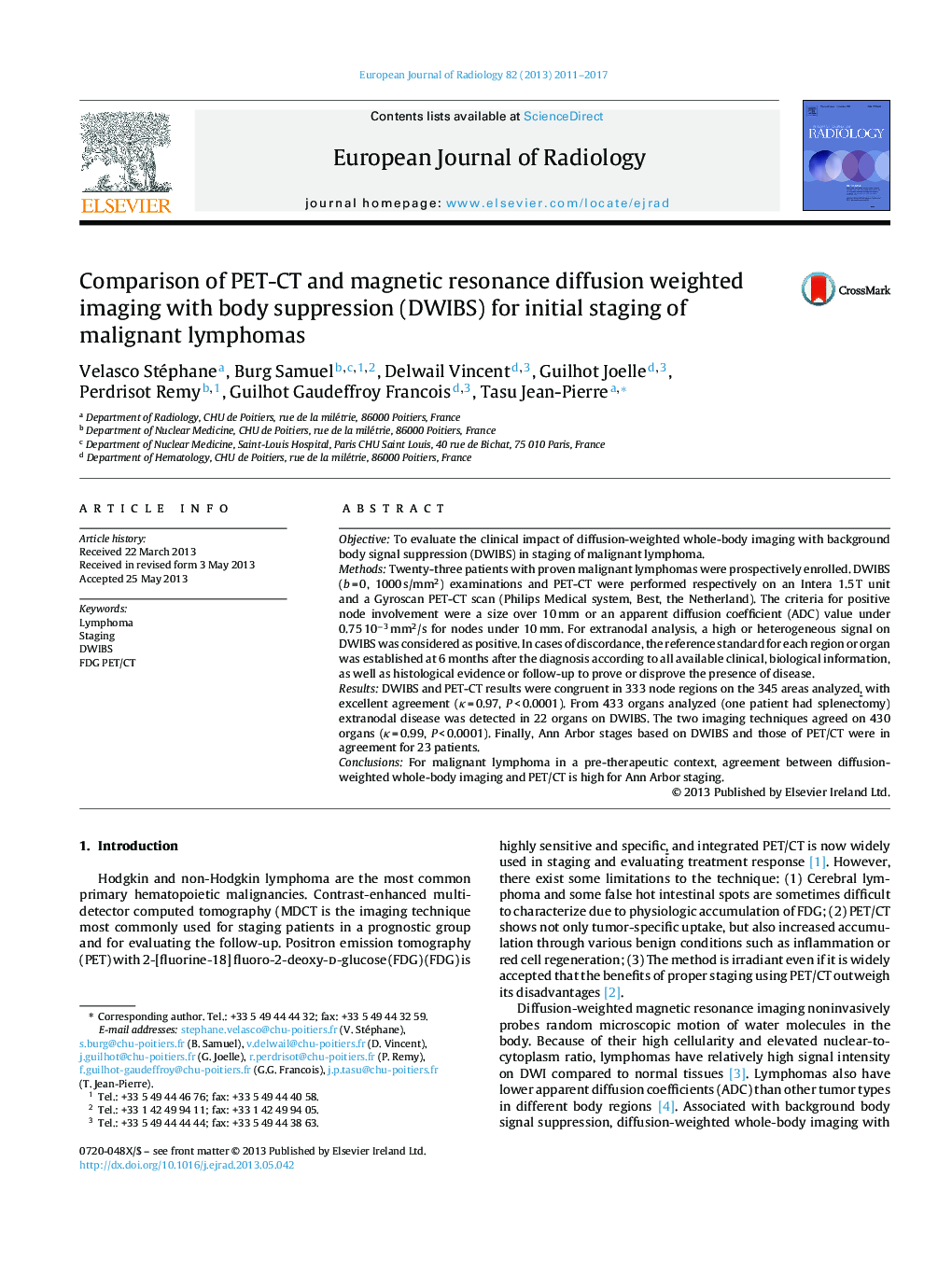| Article ID | Journal | Published Year | Pages | File Type |
|---|---|---|---|---|
| 4225665 | European Journal of Radiology | 2017 | 7 Pages |
ObjectiveTo evaluate the clinical impact of diffusion-weighted whole-body imaging with background body signal suppression (DWIBS) in staging of malignant lymphoma.MethodsTwenty-three patients with proven malignant lymphomas were prospectively enrolled. DWIBS (b = 0, 1000 s/mm2) examinations and PET-CT were performed respectively on an Intera 1.5 T unit and a Gyroscan PET-CT scan (Philips Medical system, Best, the Netherland). The criteria for positive node involvement were a size over 10 mm or an apparent diffusion coefficient (ADC) value under 0.75 10−3 mm2/s for nodes under 10 mm. For extranodal analysis, a high or heterogeneous signal on DWIBS was considered as positive. In cases of discordance, the reference standard for each region or organ was established at 6 months after the diagnosis according to all available clinical, biological information, as well as histological evidence or follow-up to prove or disprove the presence of disease.ResultsDWIBS and PET-CT results were congruent in 333 node regions on the 345 areas analyzed, with excellent agreement (κ = 0.97, P < 0.0001). From 433 organs analyzed (one patient had splenectomy) extranodal disease was detected in 22 organs on DWIBS. The two imaging techniques agreed on 430 organs (κ = 0.99, P < 0.0001). Finally, Ann Arbor stages based on DWIBS and those of PET/CT were in agreement for 23 patients.ConclusionsFor malignant lymphoma in a pre-therapeutic context, agreement between diffusion-weighted whole-body imaging and PET/CT is high for Ann Arbor staging.
